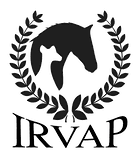Equine Physiotherapy
What is Veterinary Physiotherapy?
Veterinary Physiotherapy uses a variety of non invasive techniques to holistically assess and treat an animal. This helps to; prevent injury, reduce pain, improve mobility, restore muscloskeletal balance and increase strength. It can be beneficial for older animals, those recovering from injury or surgery as well as enhancing athletic performance.

Equine Physiotherapy
Veterinary physiotherapy can help to keep your horse in peak physical condition and support athletic function. It is also beneficial to help to identify and treat the cause of behavioural and performance issues
such as: behaviour changes in the stable or when ridden, drop in performance, unwillingless to move forwards/lack of impulsion or refusing jumps.
Veterinary physiotherapy can also support or aid in the recovery following injury, surgery or disease. Some of the
conditions treated with veterinary physiotherapy include:
- Osteoarthritis
- Kissing spines
- Tendon Injuries
- Suspensory Desmitis
- Sacroiliac joint dysfunction
- Muscle asymmetries
- Performance issues
- Wound healing
- Stress Fractures/Splints
- Rhabdomyolsis/ Tying up
If you are unsure if veterinary physiotherapy would be suitable for your horse then feel free to contact us to discuss your animals' case.
Legal
Prior to an appointment, in accordance with The Veterinary Surgeons Act (1966) and the Veterinary Surgeon (Exemptions) Order 2015, we are legally required to contact your Veterinary Surgeon to gain consent for treatment. Therefore prior to an appointment we ask that you contact us, by phone or email, so we receive the required information and are able to contact your veterinary surgeon for consent.
What to expect
First appointments will last approximately 1.5 hours.
Repeat appointments will last approximately
1 hour.
Initially a detailed history will be taken, discussing many aspects of your animals social and medial history. Following this a static observation and gait assessment will be performed to assess how your animal moves and stands. A hands on assessment of your animals muscle tone and joint range of motion will follow to get a complete understanding of how their musculoskeletal system functions.
Any areas of muscloskeletal dysfunction will be treated using a variety of therapeutic techniques and equipment, these include:
- Soft tissue massage
- Myofascial release
- Passive range of motion
- Active range of motion
- Stretches
- NMES
- TENS
- Pulsed Magnetic Field Therapy
- Therapeutic Ultrasound
- Red Light Phototherapy
A home exercise program will also be put in place to continue to supple, stretch and strengthen your animals muscluloskeletal system. If required, further sessions will be discussed and a treatment plan instigated.


